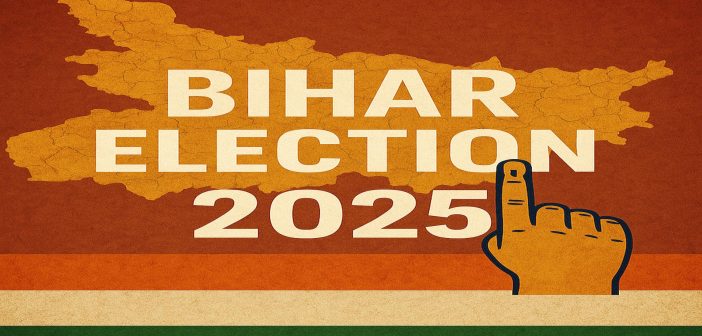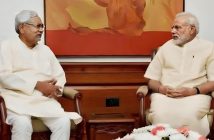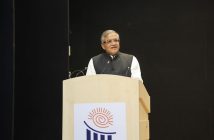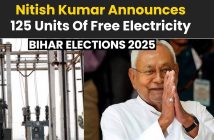A Crucial Democratic Crossroads: What the 2025 Elections in Bihar Mean for India’s Future
As India gears up for another significant electoral showdown, Bihar is poised to emerge as a political hotspot in 2025. With the state’s assembly elections slated for later this year, anticipation is building across constituencies, drawing in national and regional heavyweights. Alongside Bihar, Tamil Nadu is also heading to the polls, setting the stage for political realignments in two of India’s most politically dynamic states. These elections come at a pivotal time—amid concerns about unemployment, rural development, education, and caste-based mobilisation, voters demand more than campaign slogans. The months ahead promise high-stakes debates, intense political manoeuvring, and, most importantly, a chance for citizens to hold their leaders accountable. The question is no longer “Who will win?”—but “What kind of governance do we want?”
Key Details at a Glance
Although the Election Commission (EC) has not officially announced the election dates, the Bihar Assembly elections are expected to take place before 22 November 2025. This is because the current term of the 243-member Bihar Assembly ends on that day, as per the EC’s records. Hence, all stages of the election — from polling to counting and the announcement of the new Chief Minister — must be concluded by this deadline.
- What: Bihar Assembly Elections 2025 (and parallel elections in Tamil Nadu)
- When: Expected between September and November 2025, with official dates to be confirmed by the Election Commission of India
- Where: Bihar and Tamil Nadu
- Who: Major players include Janata Dal (United) [JD(U)], Rashtriya Janata Dal [RJD], Bharatiya Janata Party [BJP], and Indian National Congress in Bihar; DMK, AIADMK, and BJP in Tamil Nadu
- Why: To elect new legislative assemblies and set the tone for governance, economic policy, and social reform
The Political Climate: Background and Momentum
The 2025 elections are shaping up to be a referendum on the governance of the current state and central governments. In Bihar, the alliance between the JD(U) and the BJP faces renewed scrutiny over issues including youth unemployment, infrastructure gaps, and rising inflation. Opposition parties, such as the RJD, led by Tejashwi Yadav, are aggressively campaigning on promises of social justice, employment guarantees, and rural development.
In Tamil Nadu, meanwhile, the ruling DMK, under Chief Minister M.K. Stalin, is expected to face a stiff challenge from AIADMK and an increasingly ambitious BJP. While Tamil Nadu and Bihar differ vastly in their political cultures, both states are witnessing a common trend: voters seeking accountability, transparency, and solutions to everyday problems over legacy politics.
What to Expect: Timeline and Key Events
According to Election Commission insiders, the Bihar elections are tentatively scheduled for October or early November 2025. Tamil Nadu’s electoral schedule will likely overlap, creating a high-voltage political season.
- April–June 2025: Voter list verification and polling booth audits
- August 2025: Release of official election notification and final electoral rolls
- September 2025: Filing of nominations and campaign launches
- October–November 2025: Election days across phases, depending on logistical needs
The Commission has also launched a statewide voter awareness campaign emphasising online registration, voter ID verification, and inclusive polling access for older and differently-abled people. These steps aim to maximise turnout and ensure a smooth, transparent process.
Stakeholders and Their Stakes: Who Stands to Gain or Lose?
In Bihar, Nitish Kumar‘s JD(U) will aim to defend its political relevance amid shifting loyalties and criticism of development policies. Meanwhile, Tejashwi Yadav is betting on the youth vote and anger over joblessness to turn the tide in favour of RJD.
The BJP, in both Bihar and Tamil Nadu, is investing significant resources to broaden its base beyond its traditional strongholds. PM Narendra Modi is expected to spearhead aggressive campaigning in the final phases of the election. Though weakened nationally, the Congress party seeks regional revival through strategic alliances.
Political analysts from Jagran Josh and other newspapers note that “2025 could be a litmus test for coalition durability and the public’s appetite for change.” Much depends on how campaigns address local issues such as caste discrimination, agricultural distress, urban development, and women’s safety.
Prashant Kishor’s foray into Bihar’s electoral arena with his Jan Suraaj Party has injected a fresh dynamic, poised to impact numerous stakeholders. Among the potential beneficiaries are the scores of disillusioned voters, weary of the entrenched caste-based politics that have long dominated the state. These citizens, yearning for governance centred on development, may perceive Kishor’s platform as a viable alternative to the status quo. Naturally, Kishor himself and his fledgling Jan Suraaj Party stand to gain significantly, potentially securing political power and influence should they successfully translate widespread public frustration into electoral victories. Furthermore, Kishor’s emphasis on critical issues, such as employment and migration, holds the potential to resonate deeply with Bihar’s substantial youth and unemployed populations, offering them a glimmer of hope and a voice in the political discourse.
The Power of the Vote: Why It Matters More Than Ever
India’s democracy thrives not just on its institutions but also on the participation of its people. Voting is not merely a right—it’s a tool for transformation. In states like Bihar, where governance gaps still affect millions, the power to elect credible leaders could redefine the trajectory of social and economic progress.
Voter turnout in Bihar has hovered between 56% and 58% in past elections, figures experts believe must improve to reflect true public sentiment. Increased participation could pressure parties to shift from identity-based politics to issue-based manifestos focusing on employment, healthcare, digital education, and urban-rural equity.
Efforts like mobile voter registration vans, community outreach in tribal areas, and QR-code-linked voter guides are being introduced to bridge the gap between citizens and the ballot box.
Looking Ahead: A Defining Moment for State and Nation
As Bihar and Tamil Nadu brace for the ballot, the 2025 elections stand poised to be more than just a contest of parties—they may well be a defining moment in India’s democratic journey. The stakes couldn’t be higher, with youth emerging as a formidable voting bloc, digital engagement reshaping outreach, and growing public demand for responsive governance.
What unfolds in the months ahead will not only decide the next chief ministers—it could also recalibrate political narratives, alliances, and governance models across the country. Ultimately, it all boils down to one powerful act: casting your vote.
As campaign slogans echo and party colors flood the streets, every voter must ask: What kind of Bihar do we want to build?
“In a democracy, the highest office is not that of the President, but that of the citizen.” – Louis Brandeis.
Let the countdown begin.




